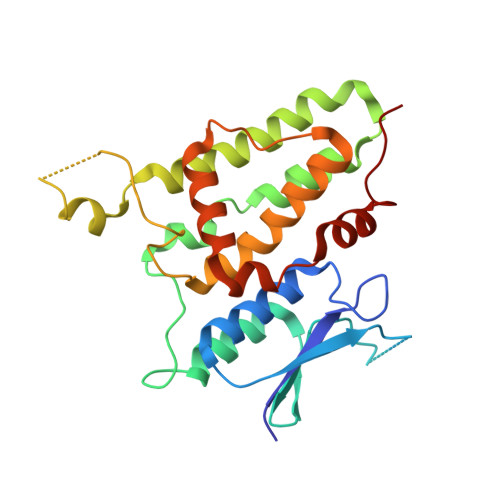Conserved cysteine dioxidation enhances membrane interaction of human Cl - intracellular channel 5.
Ferofontov, A., Vankova, P., Man, P., Giladi, M., Haitin, Y.(2020) FASEB J 34: 9925-9940
- PubMed: 32725932
- DOI: https://doi.org/10.1096/fj.202000399R
- Primary Citation of Related Structures:
6Y2H - PubMed Abstract:
The human chloride intracellular channel (hCLIC) family is thought to transition between globular and membrane-associated forms by exposure of a hydrophobic surface. However, the molecular identity of this surface, and the triggering events leading to its exposure, remain elusive. Here, by combining biochemical and structural approaches, together with mass spectrometry (MS) analyses, we show that hCLIC5 is inherently flexible. X-ray crystallography revealed the existence of a globular conformation, while small-angle X-ray scattering showed additional elongated forms consisting of exposure of the conserved hydrophobic inter-domain interface to the bulk phase. Tryptophan fluorescence measurements demonstrated that the transition to the membrane-associated form is enhanced by the presence of oxidative environment and lipids. Using MS, we identified a dose-dependent oxidation of a highly conserved cysteine residue, known to play a key role in the structurally related omega-class of glutathione-S-transferases. Hydrogen/deuterium exchange MS analysis revealed that oxidation of this cysteine facilitates the exposure of the conserved hydrophobic inter-domain interface. Together, our results pinpoint an oxidation of a specific cysteine residue as a triggering mechanism initializing the molecular commitment for membrane interaction in the CLIC family.
Organizational Affiliation:
Department of Physiology and Pharmacology, Sackler School of Medicine, Tel-Aviv University, Tel-Aviv, Israel.















